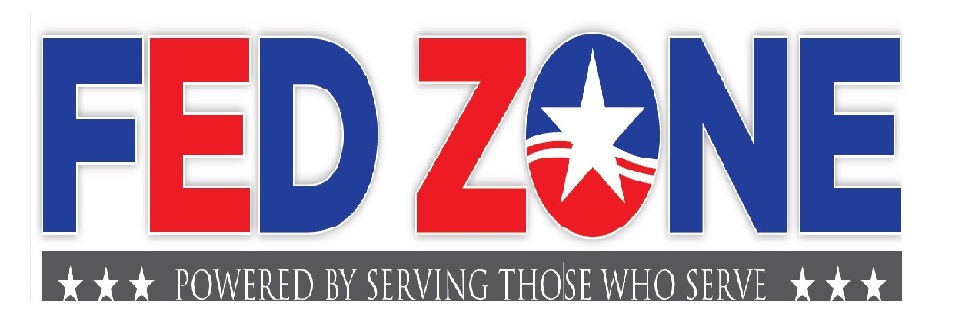A Recommended Financial To-Do List for Employees at the Start of the 2022 Leave Year
Ed Zurndorfer-


At most federal agencies, Jan. 2, 2022, marked the beginning of the 2022 leave year. For employees, now is an ideal time for employees to review and perhaps revise their financial goals for 2022 as well as to review their employee benefits. The following is a suggested 10 item financial to-do list of 10 actions that should assist employees in reviewing and revising their financial goals for 2022 and reviewing their employee benefits.
10. Make choices for the Thrift Savings Plan (TSP) for 2022.
TSP choices for 2022 include: (a) How much to contribute to the TSP during 2022; (b) Which type of TSP account – traditional or Roth, or both accounts – they want to contribute to during 2022, and (c) Reviewing their TSP fund allocations to make sure that their allocations are meeting their retirement goals. FERS-covered employees are reminded to contribute at least 5 percent of their salary each pay date to either or both the traditional and the Roth TSP. In so doing, the result will be in the employee receiving the maximum matching contribution of 4 percent from their agencies. But the 5 percent employee TSP contribution each pay date ideally will be a minimum for 2022. All employees should set a goal of maximizing their TSP contributions each year (for 2022, this means $20,500 in regular contributions and $6,500 in “catch-up” contributions for employees over age 49 as of Dec. 31, 2022).
9. Health, dental and vision insurance.
If an employee chose for the year 2022 a different health insurance, dental insurance and/or vision insurance plan during the recently completed 2021 federal benefits “open season’, the employee should contact their doctors, dentists, ophthalmologists, optometrists, pharmacies, and laboratories and notify them of any changes in the employee’s health, dental and vision insurance coverage.
8. Enrollment in a health care flexible spending account (HCFSA).
If an employee enrolled or re-enrolled in a health care flexible spending account (HCFSA) or a limited expense flexible spending account (LEXHCFSA) for the year 2022, then the employee (and family members) who incur qualifying medical, dental, or vision expenses should utilize their HCFSA in order to be reimbursed for any qualifying out-of-pocket expenses. Also, any amounts contributed to an HCFSA or to LEXHCFSA via payroll deduction during 2022, as well as any HCFSA or LEXHCFSA funds carried over from 2021, should be spent by Dec. 31, 2022.
7. Review 2021 W-2 statement.
Employees will receive from their agencies their 2021 W-2 statement (Wage and Tax Statement) sometime during January 2022. Among the items shown on the statement are an employee’s taxable wages, Social Security wages and Medicare wages earned during calendar year 2021. The statement also shows:
- (a) Federal and state income taxes withheld during 2021;
- (b) Social Security (FICA) and Medicare Part A (hospital insurance) payroll taxes withheld during 2021;
- (c) employee contributions made via payroll deduction to the traditional TSP and/or to the Roth TSP during 2021;
- (d) employee contributions made to a Federal Health Benefits (FEHB) program health plan during 2021;
- (e) if applicable, Health Savings Account contributions made by their agencies during 2021; and
- (f) the taxable amount of agency paid FEGLI life insurance premiums.
Employees are encouraged to check the accuracy of each of these items, especially the amount of their taxable wages, the amount of federal income and state income taxes withheld, and the amount of their TSP contributions. A recommended way for employees to check the accuracy of these items is to compare what is shown on their 2021 W-2 statement to what is shown on the employee’s last “leave and earnings” statement for 2021 (issued in late December 2021) under the heading “year-to-date” for each item.
6. Review federal and state income tax withholding for 2022.
Employees should evaluate their 2022 federal and state income tax withholding to determine if additional or less federal and state income taxes should be withheld from their bi-weekly payroll. An employee who plans to contribute more to the traditional TSP (in which contributions are made with before-taxed salary) may want to consider reducing the amount of their federal and state income tax withholding; on the other hand, an employee who plans to contribute more to the Roth TSP in which contributions are made with after-taxed salary) may want to consider increasing the amount of their federal and state income tax withholding. Employees may want to check with their tax advisors before taking any action om federal and state income tax withholdings.
5. Make a 2021 IRA contribution.
If not already done during calendar year 2021, employees are encouraged to make their 2021 IRA contribution for themselves and, if married, for their spouses. The maximum contribution is $6,000 if under age 50 as of Dec. 31, 2021, and $7,000 if over age 49 as of Dec. 31, 2021. All federal employees are eligible to contribute to a nondeductible traditional IRA; there are no income restrictions for contributing to a nondeductible traditional IRA. But there are income restrictions for contributing to a Roth IRA. Married employees filing jointly must have had a modified adjusted gross income (MAGI) of less than $198,000 during 2021 in order to contribute the maximum amount allowed to a Roth IRA. Single or head of household filers must have a MAGI of less than $125,000 during 2021 in order to contribute the full amount allowed to a Roth IRA. The deadline for making a 2021 IRA contribution is April 15, 2022.
4. Review life insurance coverage.
Employees are reminded to regularly review their life insurance coverage to make sure they have the appropriate amount of life insurance. Their need for life insurance and the amount of their life insurance coverage can possibly change due to the following circumstances: (1) Additional dependent family members; (2) Taking on a large amount of debt such as a mortgage; and (3) Pay for death-related expenses at one’s death, including estate and inheritance taxes and funeral expenses.
3. Review beneficiary form designations.
Employees are encouraged to review on a regular basis their beneficiary forms, almost all of which should have been completed at some point of federal service, either when they were initially hired or sometime early in their career. These beneficiary forms include:
- (1) Form SF 1152 (Designation of Beneficiary for the Unpaid Compensation and Unused Annual Leave of a Deceased Employee);
- (2) Form TSP 3 (TSP Beneficiary Designation); and
- (3) Form SF 2823 (FEGLI Life Insurance Designation).
The employee should make sure a beneficiary designation has been made for an individual life insurance policy that the employee may have purchased. Employees who own traditional IRAs and Roth IRAs should make sure they have made their beneficiary designations. Employees who in the past made beneficiary designations for the TSP, life insurance policies and IRAs in the past and whose personal circumstances may have changed (for example, divorce, death of a family member) should make sure to update their beneficiary designations. If not already done, for all their beneficiary forms in which employees named primary beneficiaries, employees should also name contingent beneficiaries.
2. Review debt status, especially with respect to credit card debt.
Record individual spending occurred during the recently concluded 2021 holiday season and much of the holiday gifts purchased were paid for using credit cards. With most of these credit card bills coming due in January, those employees who used their credit cards to shop during the holiday season hopefully will be able to pay their credit card bills in full. If not, they should make every effort to pay any balances remaining as soon as possible in order to avoid or at least minimize past due payment fees and high-interest charges.
1. Review future Social Security retirement and disability benefits by reviewing one’s Social Security benefits statement.
If an employee has not done so, he or she is highly encouraged to open up their own account on the Social Security website. In so doing, the employee is able to download their Social Security benefits statement at any time. Among the items presented on a Social Security benefits statement are an individual’s calculated disability benefits which is the monthly amount (in today’s dollars) to be paid should the individual become disabled. Also included is the individual’s calculated monthly retirement benefit at age 62, at his or her full retirement age (FRA), and when the individual becomes age 70. These monthly benefits at age 62, FRA and age 70 are calculated based on the individual’s 35 highest years of Social Security earnings. An individual’s family and survivor benefits are also reported. An individual’s Social Security earnings is reported each year on the individual’s W-2 statement. Employees are also encouraged to download their Social Security benefits statement in July or August 2022 to make sure that their 2021 Social Security earnings (shown on their 2021 W-2, Box 3) has been reported correctly by the employee’s agency to the Social Security Administration. Employees who have not established their Social Security account can apply to set up their account by going to www.ssa.gov/myaccount.

Federal Benefits in 2022
Edward A. Zurndorfer is a Certified Financial Planner, Chartered Life Underwriter, Chartered Financial Consultant, Chartered Federal Employee Benefits Consultant, Certified Employees Benefits Specialist and IRS Enrolled Agent in Silver Spring, MD. Tax planning, Federal employee benefits, retirement and insurance consulting services offered through EZ Accounting and Financial Services, and EZ Federal Benefits Seminars, located at 833 Bromley Street – Suite A, Silver Spring, MD 20902-3019 and telephone number 301-681-1652. Raymond James is not affiliated with and does not endorse the opinions or services of Edward A. Zurndorfer or EZ Accounting and Financial Services. The information has been obtained from sources considered to be reliable, but we do not guarantee that the foregoing material is accurate or complete. While the employees of Serving Those, Who Serve are familiar with the tax provisions of the issues presented herein, as Financial Advisors of RJFS, we are not qualified to render advice on tax or legal matters. You should discuss tax or legal matters with the appropriate professional.